Stones & Beatles, Saints & Sinners
See just this Post & Comments / 2 Comments so far / Post a Comment / HomeSunday, February 12, 2006
Miami Herald: Jet jumper, off life support, dies at 29 ... and that was the end of Troy Anthony Rigby ... They are doing an autopsy, earlier reports had the Sherrif saying that there was no need of an investigation. I believe that he is not the only one to suffer serious effects apparently from Taser weapons.
Friday, February 3, 2006
 They used the Tasers this time and the guy lived;
They used the Tasers this time and the guy lived;Contra Costa Times: Plane passenger runs wild on jet
But Tasers are not all good, and Troy "was not a model prisoner";
Sun Sentinel: From plane to life support in three mysterious days
Thursday, February 1, 2006
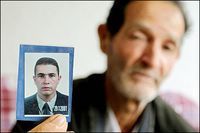


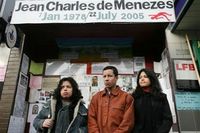

Father, Matozinho Otoni da Silva; Cousin, Vivian Figueiredo; Cousin, Patricia Da Silva Armani; Cousins, Patricia, Alex Pereira, and Vivian; Mother & Father.
Thursday, January 19, 2006
BBC: Menezes report handed in to CPS.
Sanford Herald: Alpizar did not deserve to die.
Daytona Beach News: Society sinks second chances.
Inside Costa Rica: US Ambassador Reaffirms Costa Rican Had A Bomb.
Friday, December 23, 2005
Local 10 Dec 13 - Body Of Man Shot At MIA Returned To Costa Rica. I guess I would not want to be buried on American soil either, if it were me.
Newsweek Dec 19 - 'Anxious to Get Home'
Sunday, December 11, 2005
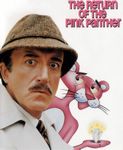 Uh oh, lookout! Somebody in America is starting to actually think about what happened to Rigoberto Alpizar - could be trouble! The Salon article is a bit annoying, you have to watch an ad to get to it, but it is worth the effort. They are not coming right out and saying, what seems likely to me, that Alpizar never said anything about a bomb, that his death was official stupidity, or that the official reaction is quite equivalent to Sir Ian Hill in the Menezes case - viz, lie about it, cover your ass, and hope it goes away in a cloud of bourgeois tut-tuts. Give it a few more days, I think it will get there. Check out the article: Salon: The war on terror: Miami.
Uh oh, lookout! Somebody in America is starting to actually think about what happened to Rigoberto Alpizar - could be trouble! The Salon article is a bit annoying, you have to watch an ad to get to it, but it is worth the effort. They are not coming right out and saying, what seems likely to me, that Alpizar never said anything about a bomb, that his death was official stupidity, or that the official reaction is quite equivalent to Sir Ian Hill in the Menezes case - viz, lie about it, cover your ass, and hope it goes away in a cloud of bourgeois tut-tuts. Give it a few more days, I think it will get there. Check out the article: Salon: The war on terror: Miami.Another interesting sidelight - the article in Wikipedia on the subject is under attack: Wikipedia: Rigoberto_Alpizar.
The Salon article and entries on Alpizar and Menezes are included in full as comments.
Friday, December 9, 2005
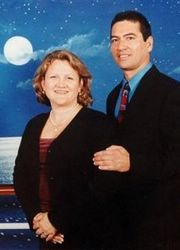 Today I was reading about Rigoberto Alpizar, the man who was shot in a Miami airport by federal marshals on Wednesday afternoon. From the very first reports I was suspicious, there was a whiff of dung, my antennae went out. There were two overlapping stories, one about a distraught man running from an airplane with his wife chasing him, and one about a potential bomber, and they didn't add up, didn't wash. I found a good summary at Wikipedia and sure enough, the official version of events is unravelling. And there at the end of the Wikipedia piece was a reference to Jean Charles de Menezes. I had forgotten about him, and what I did remember turned out to be tainted with official lies.
Today I was reading about Rigoberto Alpizar, the man who was shot in a Miami airport by federal marshals on Wednesday afternoon. From the very first reports I was suspicious, there was a whiff of dung, my antennae went out. There were two overlapping stories, one about a distraught man running from an airplane with his wife chasing him, and one about a potential bomber, and they didn't add up, didn't wash. I found a good summary at Wikipedia and sure enough, the official version of events is unravelling. And there at the end of the Wikipedia piece was a reference to Jean Charles de Menezes. I had forgotten about him, and what I did remember turned out to be tainted with official lies.I also remembered that at the time of Menezes' killing people were saying, sagely and with conviction, nodding their hoary heads, 'well you know, that`s the price you have to pay when there are terrorists about'. But that was when we thought he had fled from the cops as they tried to question him - it turned out to have happened very differently. Menezes was brutally murdered, and Alpizar was very possibly murdered as well.
 This evening on the way home I was crossing the street at a light and a Houston police cruiser almost didn't stop for me. He was on a red, and this was strange because in Houston they are very particular about street etiquette. There are 200 dollar fines for jaywalking and they are actually handed out. He did stop, and I crossed, but then I noticed another cruiser behind him and they both immediately turned and sped off up the street. No sirens, no flashing cherries. I watched, but they did so stop and wait at the next red light. Who knows what they were up to?
This evening on the way home I was crossing the street at a light and a Houston police cruiser almost didn't stop for me. He was on a red, and this was strange because in Houston they are very particular about street etiquette. There are 200 dollar fines for jaywalking and they are actually handed out. He did stop, and I crossed, but then I noticed another cruiser behind him and they both immediately turned and sped off up the street. No sirens, no flashing cherries. I watched, but they did so stop and wait at the next red light. Who knows what they were up to? I began to think about the kinds of people who choose to become police and soldiers and the like. It is hard to walk quickly in downtown Houston even when it is cold because it seems that you get stopped at every intersection and are half-afraid to cross against the light. People in the South are not bothered by it, they walk slowly anyway, but it is a constant irk to me. Tonight there was enough traffic that I was waiting, and the next moment I was humming that old Rolling Stones tune - Sympathy for the Devil:
I began to think about the kinds of people who choose to become police and soldiers and the like. It is hard to walk quickly in downtown Houston even when it is cold because it seems that you get stopped at every intersection and are half-afraid to cross against the light. People in the South are not bothered by it, they walk slowly anyway, but it is a constant irk to me. Tonight there was enough traffic that I was waiting, and the next moment I was humming that old Rolling Stones tune - Sympathy for the Devil: Just as every cop is a criminal
Just as every cop is a criminalAnd all the sinners saints.
(Beggar's Banquet, 1968)
How can every cop be a criminal? (This is the thin edge of the wedge in this argument so beware.) Not hard to see though is it, really? A similar energy but turned to positive purposes - trite but true - and quite regularly turning back in upon itself. The crowned knot of fire. We have all seen the tapes of Rodney King and others like him. But I would not say it is so much racism as is it simple minds with too much power. Certainly every cop knows the evil territory, has a little more imagination and intelligence than your average criminal, has enough frustration albeit of a different sort. I'll leave it to you.
In Brasil the frustrations are the same - the cops are about as poor as the criminals. One night, in some kind of a drug turf-war, some of them killed some others of them and dropped their heads off in front of the local station. Well, they were insiders and should have known there was a video camera there. Eventually some of them got arrested and put in jail. The remainder, or some others, I don't know, got really mad and went on a rampage. They can`t put US in jail! Set off in Nova Iguaçu and shot a half-dozen or so people hanging out playing pinball in a barzinho, killed them all including a couple of youngsters. Then they drove around, two carloads, shooting people here-and-there, randomly I suppose, until they got to Queimados, where they shot some more. A man I knew, a friend of mine, a good man, Bilica, had gotten a job in a car-wash there. They kept the end stall of the car-wash for relaxing in and had a sofa and a table and a few chairs and a cooler in there, but the end was open, facing the street. He was sitting on the sofa I guess, and stood up to see what was going on and they saw him and that was the end of Bilica. Ai ai ai.
The Beatles have been in the news for the last few days, some kind of important anniversary of 'all we are saaaa-Ying is give peace a chance' and I thought of Dylan's line: 'I seen pretty people disappear like smoke', and laughed inside and then the Dirge came to mind:
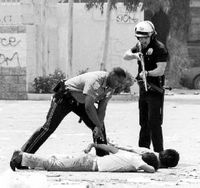 I went out on Lower Broadway
I went out on Lower BroadwayAnd I felt that place within,
That hollow place where martyrs weep
And angels play with sin.
(Planet Waves, 1974)
And I thought - I wonder if there is anything here about these two murdered men? Let me see if I can remember this until I get home and get down with it.
I very nearly didn`t. As I was almost at the gate to my apartment building I saw something white fluttering in the street. It turned out to be a little poodle dog that had been run over and left, mere moments before. The blood was spurting out of his mouth and his legs were running in the air, but by the time I got there, maybe 10 seconds later, he was dead. There was a second little white dog running around distractedly. I didn`t quite know what to do either. There was an official-looking pickup truck watching me and I thought maybe it was the dog-catcher providentially arriving, but no, he drove off. A young woman came out of the gate and I asked her what we should do. She said 'I think you dial 333 for animal emergencies', and I was about to go up and call when I realized that the dog had a tag. The body was still warm as I took off the collar, and sure enough, it had the number of the vet who had given him his rabies shot. I went up and called. He said, yes I can contact the owner. By the time I got back down there were two more girls from my building. One of them collected the body into a plastic bag. She didn't like doing it. She was pale and shaking. I gave her friend the tag. She called the vet again, this time by cell phone, got directions, not far. They put the second dog into their car, and headed off there. Good people all three of them.
A bit later I came out again and looked at the pool of blood in the street. I thought of taking a picture of it - digital blood. Didn`t, but I did remember the two murdered men. I thought of blood on subway car floors and airplane ramps, thought about photographing it - Rorschach inkblots? Thought about Marcel Proust and the pace of his endless sentences. A la recherche du temps perdu - pretentious of me, I have never read more than the first few pages of it, oh well.
 I travel by air a fair bit, and I smoke. For some reason they seem to pick me for complete searches quite often. It`s not that I fit the terrorist profiles they must have been trained with - I think it`s that I look like a kind inoffensive middle-aged Canadian who won`t mind - and it`s true, I don`t mind the searches - but I do mind having my lighter taken away. I am completely unable to see how anyone can either hijack or blow up an airplane with one lighter. I have suggested a few times that they should save them and give them back to smokers who are arriving, but one of them explained to me that there would be 'liability implications' in that. OK, an extra couple of bucks whenever I travel.
I travel by air a fair bit, and I smoke. For some reason they seem to pick me for complete searches quite often. It`s not that I fit the terrorist profiles they must have been trained with - I think it`s that I look like a kind inoffensive middle-aged Canadian who won`t mind - and it`s true, I don`t mind the searches - but I do mind having my lighter taken away. I am completely unable to see how anyone can either hijack or blow up an airplane with one lighter. I have suggested a few times that they should save them and give them back to smokers who are arriving, but one of them explained to me that there would be 'liability implications' in that. OK, an extra couple of bucks whenever I travel.Then one morning as I arrived in Houston and asked a stranger for a light and chatted with him as we companionably smoked, the stranger said to me, 'you don`t have to give them up, just tuck it in your hand baggage'.
!!!
So I tried it and sure enough! It is an extra-special bonus when I am coming from Brasil because the lighters there are not child-proof, which means that you can actually use them to light cigarettes without getting a callus on your thumb.
============
 I was going to go on with this. Bring in Thomas Pynchon and his journey into the mind of Watts in 1965; bring in the lickspittle lying coward of a police commissioner Sir Ian Blair trying to cover it up and then doubly - trying to be wily and interfere in the subsequent investigation; aa-and Sir Paul McCartney Beatle; and the whole rotten edifice; and corrupt politics; and every obsessive-compulsive power game ever invented; and every timid bureaucrat in his dung beetle bureaucracy ...
I was going to go on with this. Bring in Thomas Pynchon and his journey into the mind of Watts in 1965; bring in the lickspittle lying coward of a police commissioner Sir Ian Blair trying to cover it up and then doubly - trying to be wily and interfere in the subsequent investigation; aa-and Sir Paul McCartney Beatle; and the whole rotten edifice; and corrupt politics; and every obsessive-compulsive power game ever invented; and every timid bureaucrat in his dung beetle bureaucracy ...
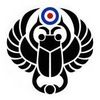
Ah, Khepera, rolling the sun, or is it the earth? or both?
============
The force that through the green fuse drives the flower
The force that through the green fuse drives the flower
Drives my green age; that blasts the roots of trees
Is my destroyer.
And I am dumb to tell the crooked rose
My youth is bent by the same wintry fever.
The force that drives the water through the rocks
Drives my red blood; that dries the mouthing streams
Turns mine to wax.
And I am dumb to mouth unto my veins
How at the mountain spring the same mouth sucks.
The hand that whirls the water in the pool
 Stirs the quicksand; that ropes the blowing wind
Stirs the quicksand; that ropes the blowing windHauls my shroud sail.
And I am dumb to tell the hanging man
How of my clay is made the hangman's lime.
The lips of time leech to the fountain head;
Love drips and gathers, but the fallen blood
Shall calm her sores.
And I am dumb to tell a weather's wind
How time has ticked a heaven round the stars.
And I am dumb to tell the lover's tomb
How at my sheet goes the same crooked worm.
 Dylan Thomas
Dylan Thomasfrom Little Gidding - T.S. Eliot
And all shall be well and
All manner of thing shall be well
When the tongues of flame are in-folded
Into the crowned knot of fire
And the fire and the rose are one.
Tags: Stones, Beatles, America, Miami, Troy Rigby, Rigoberto Alpizar, Charles Menezes, Dylan Thomas, Pynchon, Watts, TS Eliot, Khepera.




Wikipedia article: as at Tuesday, December 13, 2005
Rigoberto Alpizar (1961-04-17—2005-12-07) was a Costa Rican-born United States citizen who was fatally shot at Miami International Airport by two United States federal air marshals.
The incident occurred in the jetway between the plane and concourse after Alpizar ran off his scheduled flight to Orlando, American Airlines Flight 924. Officials claim he said he had a bomb and refused to remove his hands from a bag he carried, though witnesses inside the aircraft dispute the claim that Alpizar verbalized any such bomb threat. Following the shooting, no explosives were found on the plane nor on his carry-on or other luggage. In a news conference later that day the FBI stated that Alpizar had no connections to terrorist organizations.
Alpizar was a resident of the central Florida town of Maitland, and worked in the paint department of a Home Depot home supply store. He was supposed to fly with his wife, Anne Buechner, who tried to avert the incident by running frantically after him and shouting that he was bipolar and had not taken his medication.
Shooting:
The plane parked at the gate and passengers disembarked to be processed by customs and immigration officials. At approximately 2 PM EST, passengers continuing on to Orlando were re-boarding the plane.
After returning from customs, while the plane was finishing boarding and all 114 passengers were seated [1], Alpizar was having an argument with his wife [2]. He got up from his seat saying "I have to get off the plane" [3] and ran for the door which the flight crew had not yet closed. His wife chased after him yelling "He's sick." She was followed by an undercover air marshal. Two air marshals confronted him near the cockpit when, according to James E. Bauer, Alpizar "uttered threatening words that included a sentence to the effect that he had a bomb." He was told to stop but continued off of the plane and was confronted again in the jetway and told to get on the ground. When Alpizar didn't comply he allegedly reached into his bag and was shot. Conflicting reports put the number of shots between 3 and 6.
Two eye-witnesses, John McAlhany who said afterwards in an interview "I never heard the word 'bomb' on the plane," ... "I never heard the word bomb until the FBI asked me did you hear the word bomb." [4] and another passanger, Mary Gardner, added: "I did not hear him say that he had a bomb." [5]
After the shooting police dogs sniffed all of the luggage for explosives. No bombs or explosives were found. Passengers were held on the plane at gunpoint until all luggage was cleared.[6][7]
Mr McAlhany said he remembers having a shotgun pressed into his head by one officer, and hearing cries and screams from many passengers aboard the aircraft after the shooting in the jetway. "This was wrong," Mr McAlhany said. "This man should be with his family for Christmas. Now he’s dead."[8]
The D concourse of Miami International Airport was temporarily evacuated following the shooting and was re-opened around 3 PM EST.
Alpizar was traveling with his wife, and had arrived in Miami from a missionary trip on a plane from Quito, Ecuador [9].
This incident marks the first time that a U.S. federal air marshal has shot at a passenger or suspect.
Jean Charles de Menezes (1978-01-07 – 2005-07-22) was a Brazilian electrician living in Tulse Hill in south London, England. Menezes was shot and killed at Stockwell tube station on the London Underground by unnamed Metropolitan Police officers, who had mistaken him for a suspect in the previous day's failed bombings. Menezes had no explosives, and was later found to be unconnected with the attempted bombings.
Biography
The son of a bricklayer, Menezes grew up on a farm in Gonzaga in the state of Minas Gerais, Brazil. After discovering an early aptitude for electronics, he left the farm at age 14 to live with his uncle in São Paulo and further his education. At 19 he received a professional diploma from Escola Estadual (State School) São Sebastião. He had originally wanted to go to the United States but could not obtain a work visa.
He entered the UK on a tourist visa in 2002, and later obtained a student visa for the period to June 2003. According to a statement by the British Home Office, he did not apply for an extension, and was living illegally in the UK after that time. Within four months of his arrival he had a good grasp of the English language, and sent money he earned back to his family in Brazil. Menezes had hoped to eventually return to Minas Gerais to start a cattle ranch with his savings.
On 2005-07-27, Menezes' body was flown to Brazil for burial. His funeral took place in Gonzaga, Brazil, on 29 July.[1] A memorial service presided over by Cormac Cardinal Murphy-O'Connor was held in London's Westminster Cathedral at the same time.
[edit]
Background to the shooting
Almost all of the facts regarding the Menezes shooting were initially disputed by various parties. Contradictory witness accounts, off the record statements from police, and media speculation added to the confusion. An ITV report on 2005-08-16 claimed to contain leaked documents from an IPCC investigation which provided additional information. For a summary of the facts and events initially disputed, see Disputed facts and events.
21 July London Bombing SuspectsPolice were searching for four suspects in four attempted bombings carried out the previous day; three at Underground stations and one on a bus in Bethnal Green. A fifth unexploded device was later discovered in some bushes just north of White City and Shepherd's Bush. As the perpetrators had not died in the failed suicide bombing, a large police investigation began immediately, with the aim of tracking them down. A written address reportedly had been identified from materials found inside the unexploded bags used by the bombers, located within a three-storey block of nine flats in Scotia Road, Tulse Hill.
At around 9:30 a.m., surveillance officers observing the address saw a man, Menezes, emerge from the communal entrance of the block. The officers were watching three men who they claimed were Somali or Ethiopian in appearance. Menezes, an electrician, lived in one of the flats with two cousins, and had just received a call to fix a broken fire alarm in Kilburn.
An officer on duty at Scotia Road compared Menezes to the CCTV photographs of the bombing suspects from the previous day, and felt "it would be worth someone else having a look", but "was in the process of relieving [him]self", and was thus unable to immediately turn on a video camera to transmit images to Gold Command, the Metropolitan Police operational headquarters for major incidents. Police thought they had positively identified a suicide bomber. On the basis of this officer's suspicion, Gold Command authorised officers to continue pursuit and surveillance.
Documents from the independent agency investigation of the shooting later concluded that mistakes in police surveillance procedure led to a failure properly to identify Menezes early on, leading to rushed assumptions and actions later at Stockwell Tube station. [2]
[edit]
Pursuit and shooting
Stockwell tube station entranceThe officers followed Menezes for 5 minutes as he walked to the Tulse Hill bus-stop for the Number 2 bus line. As he boarded the bus, several plain clothes police officers boarded, continuing the pursuit. At some point during the 10-25 minute ride to the Stockwell Tube station, Menezes briefly got off the bus, waited a few moments and boarded it again. The three surveillance officers later stated that they were satisfied that they had the correct man, as he "had mongolian eyes". [3] Finally the bus arrived at Stockwell Tube station, 3.3km (2 miles) away.
At some point during this journey, the pursuing officers contacted Gold Command, and reported that Menezes potentially matched the description of two of the previous day's suspects, including Osman Hussain. Based on this information, Gold Command authorized "code red" tactics, and ordered the surveillance officers to prevent Menezes from boarding a train. According to a "senior police source at Scotland Yard", Police Commander Cressida Dick told the surveillance team that the man was to be "detained as soon as possible", before entering the station. "There's no doubt that Commander Dick did not instruct anyone to shoot de Menezes". [4] Gold Command then transferred control of the operation to SO19, which dispatched firearms officers to Stockwell Tube Station.
At some point Menezes phoned a colleague, Gesio de Avila, saying he would be late due to the disruption of public transport caused by the previous day's attempted bombings.
Menezes entered the Tube station at about 10:00 a.m., stopping to pick up a free Metro newspaper. He used his Oyster card to pay the fare and walked through the barriers, and descended the escalator slowly. He then ran across the platform to board the newly-arrived train. Menezes boarded the train and found one of the first available seats.
Menezes' body shown lying on the floor of a carriage, wearing a denim jacket.Three surveillance officers, all white English males, codenamed Hotel 1, Hotel 3 and Hotel 9 followed Menezes onto the train. According to Hotel 3, Menezes sat down with a glass panel to his right about two seats in. Hotel 3 then took a seat on the left with about two or three persons between the surveillance officer and Menezes. When the firearms officers arrived on the platform, Hotel 3 moved to the door, blocked it from closing with their left foot, and shouted 'He's here!' to identify the suspect's location.
The firearms officers boarded the train and challenged the suspect. According to Hotel 3, Menezes then stood up and advanced towards the officers and Hotel 3, at which point Hotel 3 grabbed him, pinned his arms against his torso, and pushed him back into the seat. Although Menezes was being restrained, the body of Menezes was straight and not in a natural sitting position. After hearing a shot close to their ear, the surveillance officer was dragged away onto the floor of the carriage. Hotel 3 then shouted 'Police!' and with hands raised was dragged out of the carriage by one of the armed officers who had boarded the train. Hotel 3 then heard several gunshots while being dragged out.[5] Two officers fired a total of eleven shots according to the number of empty shell casings found on the floor of the train afterwards. At close range, Menezes was shot seven times in the head and once in the shoulder. He died at the scene. An eyewitness later said that the eleven shots were fired over a thirty second period, at three second intervals. [6] A separate witness reported hearing five shots, followed at an interval by several more shots. [7]
Immediately after the shooting, the Metropolitan Police stated that the shooting was "directly linked" to the investigation of the attempted bombings the previous day. It was revealed that police policy toward suspected suicide bombers had been revised, instructing officers to fire directly toward the head, as British authorities state that shooting at the chest could detonate a concealed bomb.[8]
The officers involved in the shooting (from Scotland Yard’s SO19 firearms branch) were debriefed and drugs and alcohol tests were taken as a standard procedure. The officers were taken off duty pending an investigation into the shooting.
Later, a security agency source said: “This take-out is the signature of a special forces operation. It is not the way the police usually do things. We know members of SO19 have been receiving training from the SAS, but even so, this has special forces written all over it.” [9]
[edit]
An innocent man
The day after the shooting, the Metropolitan Police identified the victim as Jean Charles de Menezes, and said that he had not been carrying explosives, nor was he connected in any way to the attempted bombings. They issued an apology describing the incident as "a tragedy, and one that the Metropolitan Police Service regrets."
Menezes's family condemned the shooting and rejected the apology. His grandmother said there was "no reason to think he was a terrorist." It has been reported that the dead man's family had been offered almost £585,000 compensation. [10]
His cousin, Alex Alves Pereira, said, "I believe my cousin's death was result of police incompetence." Pereira, also age 27, said that police claims regarding the incident have been conflicted, and took issue with their pursuit of Menezes for an extended period and their allowing the "suspected suicide bomber" to board a bus. "Why did they let him get on a bus if they are afraid of suicide bombers?… He could have been running, but not from the police… When the Underground stops, everybody runs to get on the train. That he jumped over the barriers is a lie." [11]
The Brazilian government released a statement expressing its shock at the killing, saying that it looked forward "to receiving the necessary explanation from the British authorities on the circumstances which led to this tragedy." Foreign Minister Celso Amorim, who had already arranged to visit London, said he would seek a meeting with the UK's Foreign Secretary, Jack Straw. He later met ministers and had a telephone conversation with Straw.
The Muslim Council of Britain expressed immediate concern about the apparent existence of a "shoot to kill" policy and called on police to make clear their reasons for shooting the man dead.
[edit]
Public reaction
The reaction of the British public to the shooting was mixed. While many sympathised with the need for the police officer in question to make a split-second decision, and others that is was simply a case of collateral damage, others condemned the killings as an example of police brutality. [12].
The reaction of the Brazilian public was overwhelmingly negative. Protests and demonstrations were held in Brazil [13], and some Brazilian commentators noted that incidents such as Menezes' killing are more typical of a developing country such as Brazil than a developed nation like the UK. [14]. The level of Brazilian protestation raised criticism with some British commentators who noted that extra-judicial executions by the police in Brazil are far from rare. An Amnesty International report published in 2004 pointed out that official figures show that in 2003 police shot dead 915 people in São Paulo alone, while 1,195 were killed by police in Rio de Janeiro. Amnesty also reported that such deaths were rarely investigated. Others questioned whether the United Kingdom should use this standard to justify its own failing in this instance.
A vigil at Stockwell Station was held with some of the relatives on the Sunday immediately following the shooting and police apology. Another, called by the Stop the War Coalition, was held on the 25 July. They state that a thousand people attended and then several hundred people, led by a group of Brazilians (some of whom had been friends with Jean Charles), began an impromptu demonstration. When they approached Westminster they were stopped and turned back by police at Vauxhall Bridge, the location of the MI6 building. [15]
On 2005-08-23 Dania Gorodi, whose sister Michelle Otto was killed in the 7 July 2005 London bombings, asked for an end to the criticism of Sir Ian Blair over the Menezes shooting, which she felt had moved the media focus away from the bombings. "People have lost sight of the bigger picture," she said. "We need to support the police right now, not crucify one man. This is unprecedented in British history. He [Sir Ian] is doing the best he can." [16]
[edit]
Independent Police Complaints Commission inquiry
Several days after the discovery of the mistaken shooting, it was announced that the incident would be subject to an internal investigation by officers from Scotland Yard's Directorate of Professional Standards and would be referred to the Independent Police Complaints Commission (IPCC), as is the case with all fatal police shootings.
However, in the hours immediately after the shooting, Commissioner Sir Ian Blair telephoned the Chairman of the IPCC and wrote a letter to the Home Office stating that "the shooting that has just occurred at Stockwell is not to be referred to the IPCC and that they will be given no access to the scene at the present time." The Commissioner's intent, according to the letter later released by the Met under the Freedom of Information Act, was to protect the tactics and sources of information used in a counter-terrorism operation from public disclosure. [17]
On 2005-08-16 British broadcast network ITV released a report said to be based on leaked documents from the IPCC investigation. The report conflicted with previous statements by Police Chief Sir Ian Blair. The Metropolitan Police and the IPCC refused comment on the allegations while the IPCC investigation was ongoing, though an anonymous 'senior police source' claimed that the leak was accurate. The secretarial worker responsible for the leak was suspended. [18]
On 18 August, lawyers representing the Menezes family met with the IPCC and urged them to conduct a "fast" investigation. After the meeting the lawyers, Harriet Wistrich and Gareth Peirce, held a press conference where Ms. Peirce stated: "This has been a chaotic mess. What we have asked the IPCC to find out is how much is incompetence, negligence or gross negligence and how much of it is something sinister."[19]
On 18 August, the IPCC issued a statement in which they alleged that the "Metropolitan Police Service initially resisted us taking on the investigation". [20] They also announced that the inquiry was expected to last between three and six months. Initial press reports indicated that the inquiry was not handed over until 27 July [21], though the IPCC itself announced it took over the inquiry on 25 July. [22]
According to a press release made on 9 December, by the independent police commission that is investigating the incident, Independent Police Complaints Commission chairman Nick Hardwick and John Tate, the Commission's Director of Legal Services, said that the inguiry's report which will be forwarded to the Crown Prosecution Services will list some of the criminal offenses that the commission thought may have been committed by police though without having reached any conclusions, they also admitted the commission's judgment would be a "lower threshold" than the standard prosecutors would apply in making any final decision to prosecute. [23]
[edit]
Controversy over police procedure
Much discussion following the shooting centred around the rules of engagement followed by armed police when dealing with suspected suicide bombers. Roy Ramm, a former commander of specialist operations for the Metropolitan Police, said that the rules had been changed to permit officers to "shoot to kill" potential suicide bombers, because a head shot is the only way to disable the bomber without risking detonating their explosives.
The possibility of a police confrontation with a suicide bomber in the United Kingdom had reportedly been discussed following the terrorist attacks of 2001-09-11 in the United States. Based on this possibility, new guidelines were developed for identifying, confronting, and dealing forcefully wih terrorist suspects. These guidelines were given the code name "Operation Kratos".
Based in part on advice from the security forces of Israel and Sri Lanka (two countries with experience of suicide bombings) Operation Kratos guidelines allegedly state that the head or lower limbs should be aimed at when a suspected suicide bomber appears to have no intention of surrendering. This is contrary to the usual practice of aiming at the torso, which presents the biggest target. A successful hit to the torso may detonate an explosive belt.
Sir Ian Blair appeared on television on 24 July to accept responsibility for the error on the part of the Metropolitan Police, and to acknowledge and defend the "shoot to kill" policy, saying:
"There is no point in shooting at someone's chest because that is where the bomb is likely to be. There is no point in shooting anywhere else if they fall down and detonate it."
The Met's commissioner Sir Ian Blair, and his predecessor Lord Stevens, had expressed concern about the legal position of police officers who might kill suspected suicide bombers. There is no explicit legal requirement for armed officers to warn a suspect before firing, although guidelines published by the Association of Chief Police Officers say that this "should be considered". A potential suicide bomber is thought to represent a circumstance where warning the suspect may put the public at greater risk because the bomber may detonate his explosives after being warned.
Lord Stevens has defended the policy he said he had introduced, despite the error that had been made. Azzam Tamimi of the Muslim Association of Britain was critical, saying: "I just cannot imagine how someone pinned to the ground can be a source of danger." Other leaders of the UK's Muslim community took a similar view. Ken Livingstone, the Mayor of London, defended the police as having acted in the way they thought appropriate at the time, and with the aim of protecting the public.
[edit]
The Jean Charles de Menezes Family Campaign
In the days following Jean's killing the Jean Charles de Menezes Family Campaign was founded by Jean's family, friends and civil rights activists.
The aims of the Justice4Jean campaign are to:
find out the truth about Jean’s killing
bring those responsible for his death to justice
end the ‘Shoot to Kill’ policy and so prevent a similar tragedy happening again
to campaign against the rising tide of racism and the attack on civil liberties in the UK[24]
To date the family campaign has organised 3 events
A vigil in parliament square 7 days after Jean was killed on and also a multifaith memorial service at Westminster Cathedral held at the same time as Jean's funeral in Brazil on 29th July 2005
On 22 August, a petition asking for a public inquiry was delivered to Downing Street by Menezes family member Alessandro Pereira and members of Justice4Jean. The protestors made their way from Downing Street to Scotland Yard, together with the relatives of Paul Coker and Azelle Rodney, individuals who also died in London police incidents in 2005. [25]
A public campaign launch at the London School of Economics on the 10th October with Jean Charles' parents, the family lawyer Gareth Peirce, Bianca Jagger (EU goodwill ambassador), Matthew Taylor MP and Irene Khan from Amnesty International.
The campaign has attracted mass support from all over the world and is working to put pressure on the IPCC as they draw up their report. Trade Union branches are affiating to the campaign and the RMT nationally is an affiliate.
[edit]
Similar incidents
The Metropolitan Police have been involved in a number of other incidents in which innocent people have been shot and/or killed, such as:
1983 — Stephen Waldorf, shot and injured whilst driving a mini car. Police were looking for escaped prisoner David Martin, believed Waldorf's girlfriend Sue Stephens was Martin's girlfriend, and on this basis shot Waldorf. Two officers stood trial for attempted murder and attempted wounding but were cleared of all charges; Stephen Waldorf made a full recovery and eventually received £150,000 compensation.
1999 — Harry Stanley, 46, from Hackney, east London, who was shot and killed by Metropolitan Police officers who apparently had mistaken a chair-leg being carried in a plastic bag for a firearm.
Other UK police forces have been involved in similar incidents:
1988 — the Attorney General announces that eleven RUC officers investigated by the Stalker/Sampson inquiry into an alleged "shoot to kill" policy are not to be prosecuted. International criticism followed.
1998 — James Ashley, 39, who was shot and killed by Sussex Police while naked and unarmed during a drugs raid at his flat in St Leonards in East Sussex.
British military have also faced legal consequences in at least one similar incident:
1988 — three IRA operatives were shot dead in Gibraltar by SAS soldiers, allegedly under a "shoot to kill" policy intended to prevent them from operating any detonator on their person. The three people killed had no explosives or detonators on them, although a timed car bomb was found later. They had been under surveillance for some time prior to the incident. The European Court of Human Rights held, by majority, that there was an opportunity to stop them at an earlier stage without having to shoot them and accordingly their right to life had been infringed [26]
[edit]
Disputed facts and events
Many of the "disputed" facts in this section were very quickly resolved. Some were later demonstated as being patently false and to be fabrications of various "eyewitnesses" and journalists within the media.
Disputed facts include:
[edit]
Clothing
With regards to his dress on the day of the shooting The Observer reported that he was dressed in "baseball cap, blue fleece and baggy trousers." Mark Whitby, a witness to the shooting, told Reuters that he observed Menezes wearing a large winter coat, which "looked out of place". Vivien Figueiredo, a cousin of Menezes, was later told by police that Menezes was wearing a denim jacket on the day of the shooting.[27] Anthony Larkin, another eyewitness, told the BBC that Menezes appeared to be wearing a "bomb belt with wires coming out."
Based on these eyewitness reports, press speculation at the time said that wearing such heavy clothing on a warm day raised suspicions that Menezes was hiding explosives underneath, and was therefore a potential suicide bomber. At the time of the shooting, the temperature in London (at a Heathrow Airport weather station) was about 17 °C (62 °F) [28].
No device resembling a bomb belt was reported as found. Menezes was also not carrying a tool bag, since he had left it with his work colleague the previous evening. According to the report on leaked IPCC documents, Menezes was wearing a pair of jeans and a light denim jacket. This was confirmed by a photo of his body on the floor of the carriage after the shooting.
[edit]
Police challenge
Police initially stated that they challenged Menezes and ordered him to stop outside Stockwell station. Metropolitan Police Commissioner Sir Ian Blair said in a press conference that a warning was issued prior to the shooting. Lee Ruston, an eyewitness who was waiting on the platform, said the police did not identify themselves. The Times reported "senior police sources" as saying that police policy would not require a warning to be given to a suspected suicide bomber before lethal action was taken. [29]
The leaked IPCC documents indicated that Menezes was seated on the train carriage when the SO19 armed unit arrived. A shout of 'police' may have been made, but the suspect never really had an opportunity to respond before he was shot. The leaked documents indicated that he was restrained by an unarmed officer before being shot.
[edit]
Ticket barrier
Witnesses state that up to twenty police officers in plain clothes pursued Menezes into Stockwell station, that he jumped over the ticket barrier, ran down an escalator and tried to jump onto a train.[30] The Menezes' family were briefed by the Police that their son did not jump over the ticket barrier and may have used a Travel Card to pass through.[31]
The pathologist's post mortem report, which was written in the presence of senior police officers five days after the shooting, recorded that Jean “vaulted over the ticket barriers” and that he “ran down the stairs of the tube station”. By this time the police knew that this version of events was incorrect.[32]
Police initially refused to release CCTV footage while the IPCC investigation was ongoing, even to the family. It had been suggested that the man reported by eyewitnesses as jumping over the barrier, may have been one of the police officers in pursuit.[33]
According to the leaked IPCC documents, Menezes passed through the barrier normally using his pre-paid Oyster card.
[edit]
CCTV footage
Initial UK media reports suggested that no CCTV footage was available from the Stockwell station, as recording media had not been replaced after being removed for examination after the previous day's attempted bombings. Other reports stated that faulty cameras on the platform were the reason for the lack of video evidence. An anonymous source confirmed that CCTV footage was available for the ticket area, but that there was a problem with the platform coverage. The source suggested that there was no useful CCTV footage from the platform or the train carriage. [34]
Extracts from a later police report stated that examination of the platform cameras had produced no footage. It said: "It has been established that there has been a technical problem with the CCTV equipment on the relevant platform and no footage exists." Furthermore, it reported there was no footage, either, from CCTV in the carriage where Mr de Menezes was shot, saying "Although there was on-board CCTV in the train, due to previous incidents, the hard drive had been removed and not replaced."
The platform CCTV system is maintained by the Tube Lines consortium in charge of maintaining the Northern Line; unofficial sources from inside the company insisted that the cameras were in working order. It was also reported that London Underground sources insisted that at least three of the four cameras trained on the Stockwell Tube platform were in full working order, and rejected suggestions that the cameras had not been fitted with new tapes after police took away footage from the previous day, July 21, when suspects in the failed bombings caught trains there. [35]
[edit]
Motivations
Several reasons were initially posited by media sources and family members for why Menezes may have run from police, as indicated by initial reports. A few weeks prior, he had been attacked by a gang and may have relived the situation upon seeing plainclothes officers chasing him. Several sources have speculated that irregularities about his immigration status may have given him reason to be wary of the police[36]. According to some reports, Menezes' student visa had expired, suggesting that he was working illegally, thus fearful of being deported by authorities[37]. The Sydney Morning Herald reported that a work colleague believed that Menezes ran simply because he was late for his job[38].
It was later indicated by the leaked IPCC documents that Menezes ran across the platform apparently to get a seat on the train, but did not know at the time that he was being watched or pursued.
[edit]
Gunshots
It was initially stated by police that Menezes was shot five times in the head. Mark Whitby, a passenger on the train Menezes had run onto, said: "one of [the police officers] was carrying a black handgun—it looked like an automatic—He half tripped… they pushed him to the floor, bundled on top of him and unloaded five shots into him." Another passenger, Dan Copeland, said: "an officer jumped on the door to my left and screamed, 'Everybody out!' People just froze in their seats cowering for a few seconds and then leapt up. As I turned out the door onto the platform, I heard four dull bangs."[39] Menezes' cousin Alex Pereira, who lived with him, asserted that Menezes had been shot from behind: "I pushed my way into the morgue. They wouldn't let me see him. His mouth was twisted by the wounds and it looked like he had been shot from the back of the neck." Later reports confirmed that Jean Charles de Menezes was shot a total of eight times: seven times in the head and once in the shoulder. [40]
The leaked IPCC documents also indicated an additional three shots had missed Menezes. Apparently the eleven shots were evenly distributed over a timespan of thirty seconds.[41]
[edit]
Involvement of special forces
Several commentators suggested that special forces may have been involved in the shooting. Professor Michael Clarke, Professor of Defence Studies at King's College London, went as far as to say that unless there had been a major change in policy it was likely that it was not the police who had carried out the shooting, but special forces:
"To have bullets pumped into him like this suggests quite a lot about him and what the authorities, whoever they are, assumed about him. The fact that he was shot in this way strongly suggests that it was someone the authorities knew and suspected he was carrying explosives on him. […] You don't shoot somebody five times if you think you might have made a mistake and may be able to arrest him. […] Even Special Branch and SO19 are not trained to do this sort of thing. It's plausible that they were special forces or elements of special forces." [42]
Later, on 2005-08-04, The Guardian reported that the newly-created Special Reconnaissance Regiment (SRR), a special forces unit specialising in covert surveillance, were involved in the operation that led to the shooting. The anonymous Whitehall sources who provided the story stressed that the SRR were involved only in intelligence-gathering, and that Menezes was shot by armed police not by members of the SRR or other soldiers. Defence sources would not comment on speculation that SRR soldiers were among the plain-clothes officers who followed Menezes on to the No. 2 bus[43].